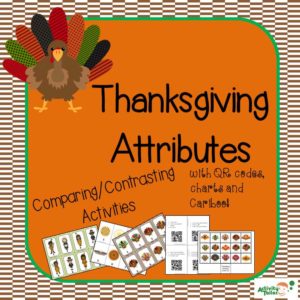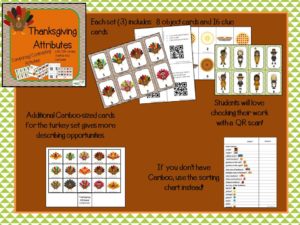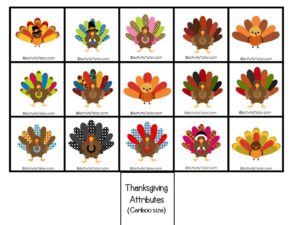Something I’ve never really understood is the relative lack of Thanksgiving decorations and activities compared to Halloween and Christmas. Thanksgiving is so American (and you know how we love our American holidays!), it requires no gift giving (so adults are generally happier/less stressed) and it doesn’t separate celebrants by religion. Anyone else feel similarly? Or am I the only one who really likes this holiday?
Last month, I created a Halloween Attributes game for comparing/contrasting skills that was lots of fun, target goals I was working on and just made me happy so it only stood to reason that I’d be pulling another version together for Thanksgiving. I think the clip art is particularly adorable!
There are three sets of cards—turkeys, pies and First Thanksgiving characters. Choose a set and lay out all eight object cards. Next the therapist begins reading clues from the clue cards (16 clue cards for each set). The student(s) makes a determination as to which cards stay and which need to be turned over or taken away (it’s like an intro Guess Who? game). When you have it whittled down to one you can check your answer by scanning the QR code! (Of course, the SLP can simply tell the student and provide reinforcement, but I had young ones that loved using my phone last year, so I threw in the QR code as a motivator.)
Everyone has been into Cariboo these days, so I’ve also added a set of turkey Cariboo cards. For these, simply attach each square card to the game and either give clues (for receptive targets) or have kiddos describe the hat they will look over (expressive targets).
If you don’t have Cariboo, don’t worry! There is a sorting chart that allows you to compare/contrast two birds with visual prompts.
You can see a full product description here.








